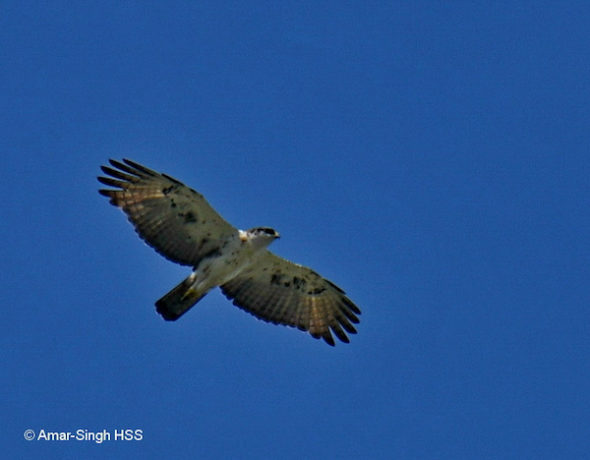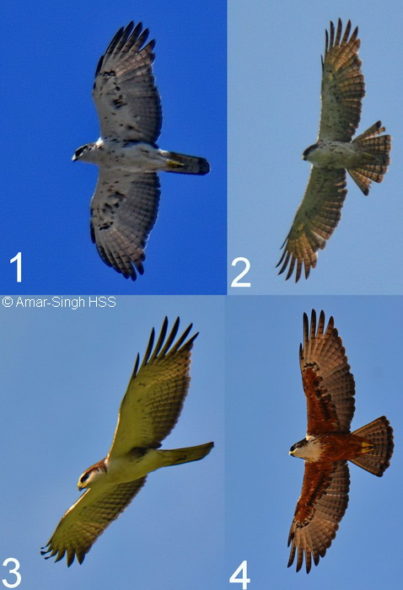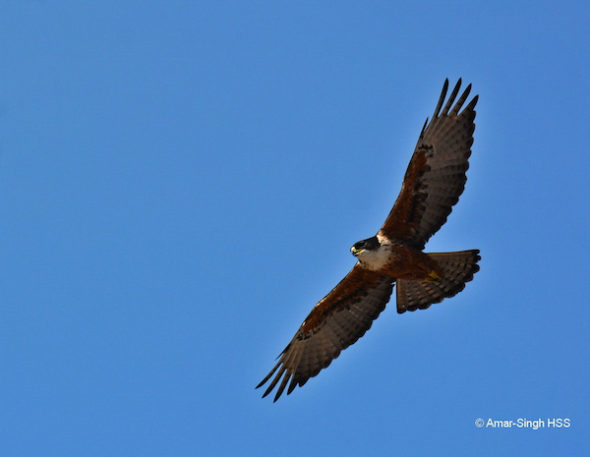
A juvenile I saw today.
I am often the recipient of the keen eyesight and sharp spotting skills of my wife. She often spots raptors from our magic kitchen window or while putting out the laundry. She saw this raptor high up catching the thermals in the mid-morning and I managed to snag some images to suggest it’s a juvenile Rufous-bellied Eagle (Lophotriorchis kienerii formosus). This raptor is uncommonly sighted and I looked through my recent records (photographic only). Date of recent sightings when the bird was observed including maturity (4 were seen at our home):
26th November 2006 (juvenile)
17th January 2010 (immature/sub-adult)
16th December 2011 (adult)
7th May 2014 (2/3rd year)
13th May 2014 (adult)
31st August 2014 (2/3rd year)
1st May 2019 (juvenile)

A composite to try and age birds, but I may have got it wrong. I do think bird 3 is more mature and possibly a 3rd year.
I arranged some of my images to try and provide a composite of aging, as best I can (happy for suggestion to change/edit). I am not sharp enough to distinguish adult males from female, let alone in juveniles, so have not discussed this. Juveniles largely have white underparts and brown upperparts with a black eye mask. Ferguson-Lees & Christie (2001) say that the “black hood may appear in second year, when underparts still white or with only few black streaks, but rufous abdomen probably does not show until third year, when rest of upper parts start to become blacker”. Wells (1999) says that juveniles have a sandy rufous cap; Ferguson-Lees & Christie (2001) say ‘brown crown’ in juveniles. In all ages, except in the very young, the trailing edges of the wings (primaries and secondaries) and tip of tail feathers have a black edge/line.

An adult from an earlier encounter (May 2014) and I would appreciate any pointers on sexing.
References:
James Ferguson-Lees, David A. Christie (2001). Raptors of the World,
Wells, D.R. (1999). The birds of the Thai-Malay Peninsula: Vol. 1 (Non-Passarines). Christopher Helm, London
DISCUSSION
Amar-Singh HSS (Dato’ Dr) – Ipoh, Perak, Malaysia
Habitat: Urban environment
Date: 1st May 2019
Equipment: Nikon D500 SLR with Tamron SP 150-600mm f/5-6.3 Di VC USD, handheld with Rode VideoMic Pro Plus Shotgun Microphone








